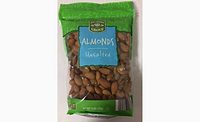
But, there may be a solution. Kristin Bilyeu, a researcher with the USDA Agriculture Research Service located in the Michigan University College of Agriculture, Food and Natural Resources, has developed a soybean plant that produces an oil low in saturated and trans fats.
“When we started this research, we were looking at three factors,” says Bilyeu. “We needed a heart-healthy oil. It needed to be stable with a good shelf life. Finally, it needed to be economically feasible. Oleic acid is a stable component of oil and is not a saturated fat. It does not require hydrogenation, which stabilizes oil but creates trans fats. Oleic acid is the main component of olive oil, but is not a large component in soybean oil. We set out to help the soybean produce more oleic acid in the beans.”
Through natural pollination procedures, Bilyeu and Grover Shannon, professor of plant sciences at MU, developed soybean oil that was very high in oleic acid, which not only stabilized the oil, but also made it healthier. The natural breeding increased oleic acid in the bean from 20 percent to 80 percent and decreased the amount of saturated fat in the oil by 25 percent.
Additionally, because the new oil is more stable, it doesn’t require hydrogenation, which typically rids the oil of Omega-3 fatty acids, which are good supplements for the human heart.
The next step of the research is determining whether this soybean will produce economically viable yields in different environments. Soybeans are grown in nearly every climate in the middle of the country. Preliminary results look promising.
“One of the nice things about this trait of producing oil that is high in oleic acid is that it appears to be very stable,”


